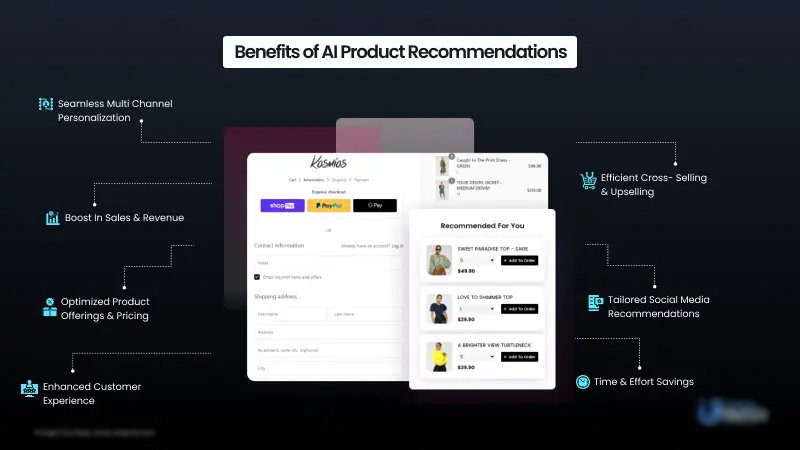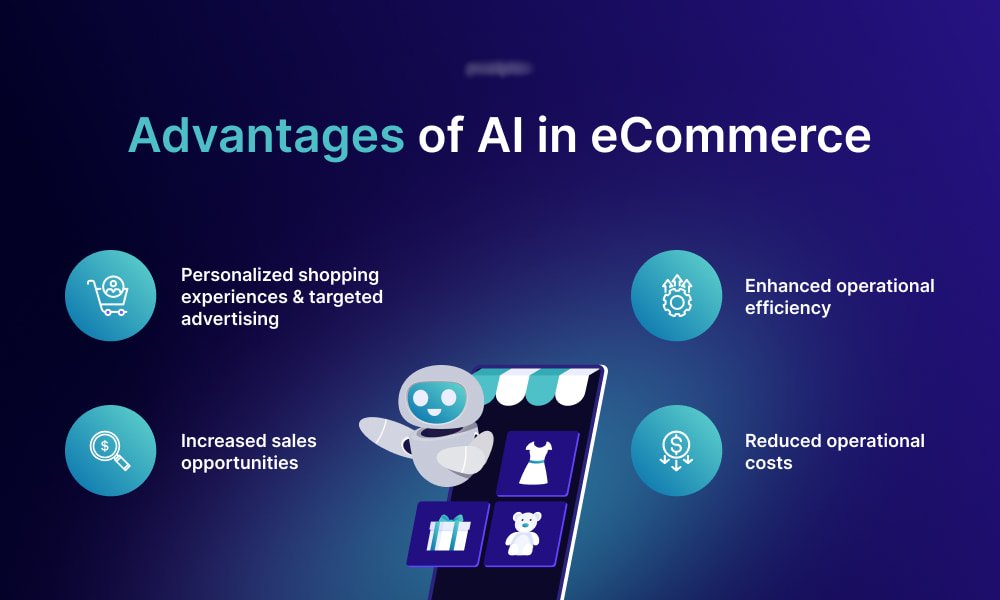In the modern digital marketplace, customers expect a personalised shopping experience. Personalised shopping experiences revolutionise e-commerce. This results in increased engagement, higher conversions and better brand loyalty. E-commerce Businesses and Customer Segmentation and AI Recommendations — E-commerce businesses can impact shoppers’ overall experience using AI recommendations.
This guide explains the importance of e-commerce personalisation, practical strategies, and sends, as well as how businesses can implement these techniques to boost sales and improve user satisfaction.
Why Personalization Matters in E-commerce
E-commerce personalisation delivers tailored experiences based on customer behaviour, demographics, and preferences. Instead of showing the same content to everyone, personalization ensures shoppers see relevant items, increasing engagement and conversion rates.
The Impact of Personalization on Sales
Studies show that:
- 91% of consumers are likelier to shop with brands offering personalised recommendations.
- 80% of shoppers prefer buying from companies that provide customised experiences.
- E-commerce businesses using personalisation see a 10-30% revenue increase.
By utilising AI recommendations for e-commerce, companies can analyse customer data and show the right products at the right time, boosting purchase likelihood.
Key Strategies for E-commerce Personalization

1. AI-Powered Product Recommendations
It is highly effective to use artificial intelligence (AI) for real-time product recommendations. AI analyses browsing history, past purchases, and user preferences to suggest relevant products.
How to Implement AI Recommendations:
- On the Homepage: Show products based on past browsing.
- Product Pages: Display “Customers also bought” or “Frequently bought together.”
- Shopping Cart: Suggest complementary items to increase order value.
- Email Marketing: Send personalised product recommendations based on past purchases.
Integrating AI recommendations for e-commerce makes the shopping experience more engaging.
2. Customer Segmentation for Targeted Marketing
Customer segmentation strategies divide your audience into groups based on demographics, shopping habits, or interests. This helps businesses create targeted marketing campaigns that resonate.
Common Segmentation Methods:
- Demographic Segmentation: Age, gender, location, income.
- Behavioural Segmentation: Purchase history, browsing habits.
- Psychographic Segmentation: Interests, values, lifestyle.
- RFM Analysis: Segments based on Recency, Frequency, and Monetary Value.
Benefits of Customer Segmentation:
- Drives personalised emails with higher open and click rates.
- Enables targeted ads that align with customer preferences.
- Improves retention with tailored loyalty rewards.
Effective customer segmentation strategies lead to more relevant content and offers, boosting customer satisfaction.
3. Personalized Email Marketing Campaigns
Email marketing is a powerful way to engage with customers. Adding personalisation can significantly increase open rates and conversions.
Ways to Personalize Emails:
- Personalised Subject Lines: Emails with names see higher engagement.
- Dynamic Content: Show different products based on user behaviour.
- Cart Abandonment Emails: Remind customers of items left in their cart with an incentive.
- Post-Purchase Emails: Suggest complementary products based on recent purchases.
Leveraging customer data allows businesses to create effective email campaigns that feel relevant.
4. Dynamic Website Content & Personalization
Personalising website content ensures visitors see what matters to them right away. This is done through dynamic content that changes based on user behaviour, purchase history, or location.
Examples of Dynamic Personalization:
- Tailored Homepage Banners: Show different promotions based on interests.
- Geolocation-Based Offers: Display local deals or currency settings.
- Returning Customer Recognition: Greet returning customers with personalised recommendations.
A website that adapts to the shopper’s needs creates a personalised shopping experience, encouraging longer sessions and more purchases.
5. Personalized Discounts and Loyalty Rewards
Another effective strategy is offering exclusive discounts based on customer behaviour. These tailored offers encourage repeat purchases and increase customer value.
Types of Personalized Discounts:
- First-Time Buyer Discounts: Encourage new visitors to make their first purchase.
- Birthday & Anniversary Offers: Send personalised discounts on special occasions.
- Exclusive VIP Rewards: Offer deals to loyal customers based on past purchases.
- Targeted Discounts: Provide discounts based on abandoned carts or browsing history.
Adding personalised discounts to marketing campaigns strengthens customer relationships and drives conversions.
The Role of AI in E-commerce Personalization

AI is crucial for creating personalised shopping experiences. AI-driven personalisation allows businesses to:
- Predict Customer Behavior: Analyze data to forecast customer purchases.
- Automate Personalization: Provide real-time product recommendations and targeted promotions.
- Enhance Customer Support: Use AI chatbots for personalised assistance.
With AI, businesses can streamline personalisation strategies and enhance the shopping experience.
Best Practices for Implementing E-commerce Personalization
To succeed, businesses should follow these best practices for personalisation strategies:
- Collect and Analyze Customer Data: Use tools like Google Analytics and CRM software for insights.
- Use Multi-Channel Personalization: Implement it across emails, websites, social media, and apps.
- Balance Automation with Human Touch: While AI boosts efficiency, it adds a human element for stronger relationships.
- A/B Test Personalization Strategies: Regularly test personalised elements to optimise performance.
- Ensure Privacy & Data Security: Be transparent about data use and comply with privacy regulations.
By adopting these best practices, businesses can create an effective personalisation strategy that boosts engagement and sales.
Personalisation: Key in E-commerce
So, personalisation is the key to e-commerce. Read More: Explore Machine Learning in E-Commerce: A Detailed Analysis of AI Recommendations for E-Commerce, Customer Segmentation, and Personalized Shopping Experiences
To start, focus on:
- AI-powered product recommendations.
- Customer segmentation for targeted marketing.
- Personalised emails and website content.
- Tailored discounts and rewards.
With the evolution of e-commerce, personalisation will continue to be a driver of success. Businesses adopting these strategies will increase conversions and build stronger customer relationships, resulting in growth and profitability.


